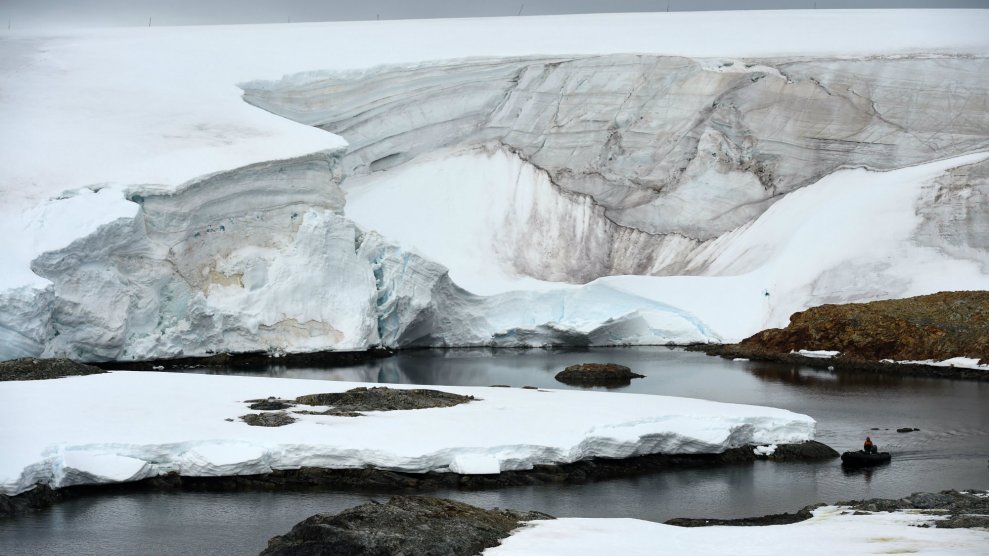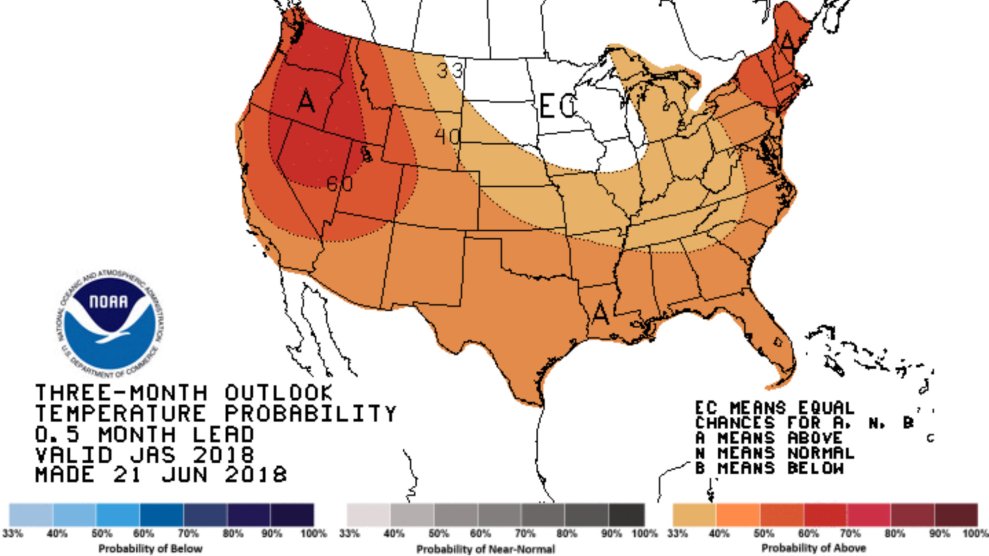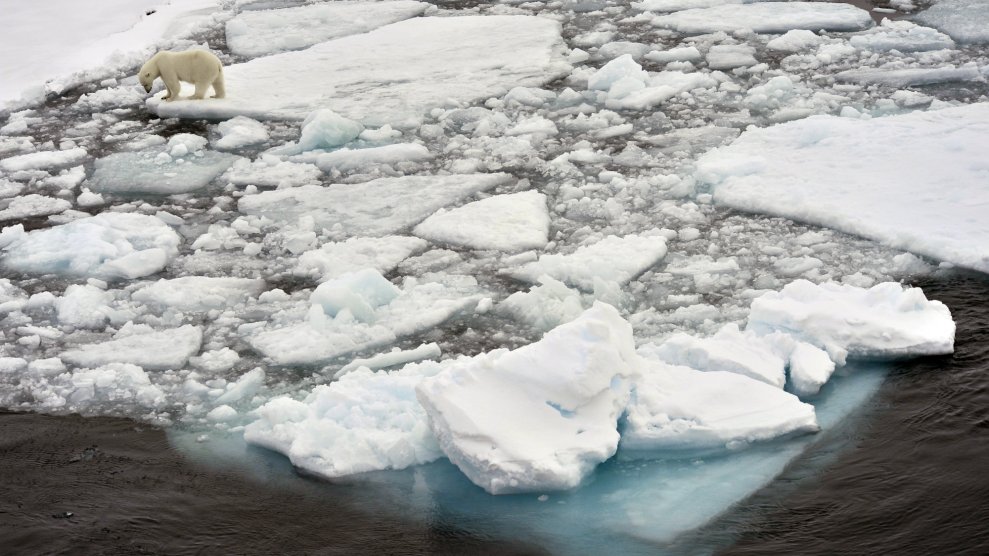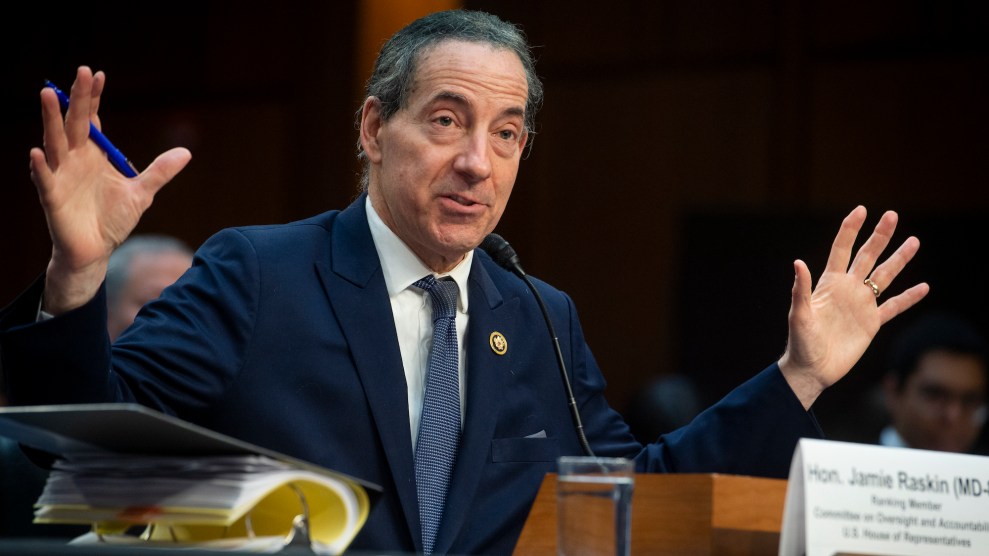
Itan Abramovich/AFP/Getty Images
This story was originally published by National Observer. It appears here as part of the Climate Desk collaboration.
Neil Swart had barely begun his master’s degree at the University of Cape Town when he embarked on a three-month voyage to the South Pole.
While aboard a ship meant to resupply South Africa’s research facilities in Antarctica, enduring rocky waters and waves reaching 10 meters tall, Swart deployed instruments to record the Antarctic Ocean’s temperature.
At the time, Swart thought of himself as a volunteer helping further “someone else’s science.” He didn’t expect that 13 years later, the data he collected would allow him and a team of researchers to identify human activity as the number one cause of rising water temperatures in the Antarctic Ocean, also known as the Southern Ocean.
“It’s kind of nice to see it come full circle,” Swart, now a researcher with Environment and Climate Change Canada, told National Observer in an interview.
Along with other scientists from the department, and the Scripps Institution of Oceanography in California, Swart found that changes seen in Southern Ocean temperature are directly tied to ozone depletion and human-induced greenhouse gas emissions, as opposed to regular temperature variations or responses to natural climate changes, such as volcanic eruptions or changes in the sun.
Their findings were published in the scientific journal Nature Geoscience on Monday.
Serious consequences for the ocean
While the connection between human-made greenhouse gas emissions and rising global ocean temperatures has long been understood, this is the first time it has been proven specifically for the waters that surround Antarctica, explained Swart.
Since industrialization, the ocean has absorbed nearly 40 percent of human-made greenhouse gas emissions. The Southern Ocean, according to Swart, is responsible for absorbing the majority of those emissions.
“The Southern Ocean is the single most important region globally taking up the heat associated with global warming,” he said. As a result, it plays a huge role in mitigating the effects of climate change.
“If it weren’t providing these services, so to speak, we would be experiencing far more CO2 increases in the atmosphere. So understanding changes in this region is really critical.”
The consequences of human-induced warming in that region are not minor, he added.
“By driving an intense warming of these southern waters, we’re increasingly destabilizing the Antarctic ice sheet,” he said. That contributes to well-documented increases in sea level, affecting coastal populations, he explained, and “the warmer ocean water becomes, the less effective it becomes at absorbing CO2.”
Only 1 plausible reason for So. Ocean warming in last 50 yrs, say @environmentca and Scripps scis in @NatureGeosci. Using data from Argo network & other sources, find "human-caused increases in GHGs and stratospheric ozone depletion" is cause. @jcommops https://t.co/vs46Z6FCgH pic.twitter.com/7QvqwtRuTk
— Scripps Oceanography (@Scripps_Ocean) September 24, 2018
Swart explained that as the ocean’s ability to absorb climate-warming carbon dioxide decreases, global temperatures stand to increase, all of which could lead to greater weather extremes, such as more heat waves and changes in or stronger precipitation events.
To attribute the rise in ocean water temperature in the region to human activity, Swart and his team used simulations based off historical data and recent observations. By removing contributing factors from their simulation, the researchers were able to pinpoint the the cause as being man-made greenhouse gas emissions and ozone depletion.
Fossil fuel production and consumption are some of the greatest emitters of greenhouse gases. In 2015, 26 percent of Canada’s greenhouse gas emissions came from the oil and gas industry.
In a 2012, Swart and Andrew Weaver—then a climate scientist, now an MLA in British Columbia and head of the province’s Green Party—published a controversial article in the journal Nature Climate Change. The pair suggested coal was a bigger threat to climate change than oilsands. After their research was used by pro-oilsands advocates to justify calls for expansion, they later stressed that all fossil fuel use needs to be regulated to reduce global warming.
“Zero emissions” only way to stabilize climate
“It is very clear that to limit warming to any given (global temperature) target…there’s a finite amount of CO2 emissions that we’re allowed to make, kind of like a budget we’re allowed to spend,” said Swart.
“If we go above that, we will exceed that target threshold. We have to get to zero emissions at some point in the future if we were to stabilize the climate.”
While it’s a lofty goal, Swart said ozone depletion is a good example of a climate problem tackled by policy. The Montreal Protocol, which took effect in 1989, helped eliminate the production of chlorofluorcarbons, a chemical that contributed the depletion of the ozone layer and was once commonly found in refrigerators and aerosol sprays. In the decades since, there has been significant decrease in ozone depletion.
Last November, an amendment was added to the protocol to reduce production of hydrofluorocarbons, which are used similarly to chlorofluorcarbons. Titled the Kigali Amendment, it will come into effect on Jan. 1, 2019.
“As a result, the consequences of (ozone depletion) are not going to be as severe as they would have been if we hadn’t taken action,” said Swart.
“I think that provides a good model for the case with CO2—that we also have to take some kind of similar action which ultimately deals with the problem.”
13 years ago we crossed the formidable Southern Ocean, collecting (a tiny fraction of) the data used in our study, published today, explaining why the region is warming so rapidly. https://t.co/o1sB1TkNdK @ECCCSciTech pic.twitter.com/jpeFp2QaM1
— Neil Swart (@Neil_C_Swart) September 24, 2018
The Pan-Canadian Framework on Clean Growth and Climate Change is one of the federal government’s attempts to take such action. The strategy, which was introduced in December 2016, is meant to significantly reduce Canada’s greenhouse gas emissions by 2030. It intends to do so, in part, through a carbon tax scheme, which Ontario, Saskatchewan and Alberta have all opposed.
Canada has also committed to the Paris Agreement, along with 194 other countries in December 2015. Though not legally binding, in doing so, Canada also pledged to take action to limit a global temperature increase of two degrees this century.















